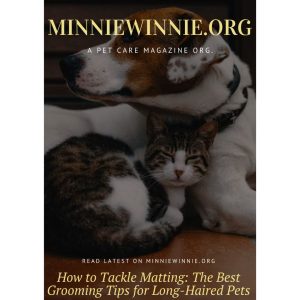How to Enhance Your Pet’s Wellbeing Through Proper Grooming Practices
Pets are more than just companions; they are members of our families. As responsible pet owners, it’s our duty to ensure they lead healthy and fulfilling lives. One crucial aspect of their wellbeing that often gets overlooked is grooming. Proper grooming practices not only keep your furry friend looking sharp but also play a significant role in their overall health and happiness.
In this article, we’ll delve into the importance of grooming for pets and explore some practical tips to ensure your pet receives the care they deserve.
The Importance of Grooming: Grooming is not merely about aesthetics; it’s about maintaining your pet’s physical and mental health. Here’s why grooming is essential:
- Skin and Coat Health: Regular brushing removes dirt, dander, and loose hair from your pet’s coat, preventing matting and tangling. It also stimulates the production of natural oils, keeping the skin moisturized and reducing the risk of skin infections.
- Preventing Parasites: Grooming sessions are an excellent opportunity to check your pet for fleas, ticks, and other parasites. Early detection can prevent infestations and potential health issues down the line.
- Bonding Time: Grooming strengthens the bond between you and your pet. It’s a time for gentle touch and affection, fostering trust and companionship.
- Temperature Regulation: During hot weather, regular grooming helps remove excess fur, allowing your pet to stay cool. In colder months, it fluffs up the coat for better insulation.
- Preventing Ear and Eye Infections: Cleaning your pet’s ears and eyes as part of grooming removes dirt and reduces the risk of infections.
Now that we understand the importance of grooming let’s dive into some practical tips to enhance your pet’s wellbeing through proper grooming practices.
Practical Grooming Tips:
- Establish a Routine: Consistency is key when it comes to grooming. Establish a regular grooming schedule based on your pet’s needs and stick to it. This routine helps your pet become accustomed to grooming sessions, reducing stress and anxiety.
- Use the Right Tools: Invest in quality grooming tools suitable for your pet’s breed and coat type. Brushes, combs, nail clippers, and ear cleaners should be part of your grooming arsenal. Consult your veterinarian or a professional groomer for recommendations if you’re unsure.
- Brush Regularly: Brushing removes loose hair, prevents mats and tangles, and stimulates circulation. Short-haired pets may require weekly brushing, while long-haired breeds may need daily sessions to keep their coats in top condition.
- Bathe Wisely: Bathing frequency depends on your pet’s lifestyle and coat type. Over-bathing can strip the skin of natural oils, leading to dryness and irritation. Use a mild pet shampoo and lukewarm water, and thoroughly rinse to avoid residue.
- Trim Nails Carefully: Long nails can cause discomfort and lead to joint issues. Trim your pet’s nails regularly, but be cautious not to cut into the quick, which can cause bleeding and pain. If you’re unsure, seek guidance from a professional groomer.
- Pay Attention to Ears and Eyes: Clean your pet’s ears with a vet-approved solution to remove wax and debris. Check for signs of infection, such as redness or foul odor. Similarly, gently wipe around your pet’s eyes to remove discharge and prevent tear staining.
- Monitor Dental Health: Dental hygiene is crucial for your pet’s overall wellbeing. Brush your pet’s teeth regularly with a pet-safe toothbrush and toothpaste to prevent tartar buildup and gum disease.
Conclusion: Proper grooming is not just about aesthetics; it’s a fundamental aspect of pet care that directly impacts their wellbeing. By incorporating regular grooming practices into your pet care routine and following the tips outlined in this article, you can ensure your furry friend stays healthy, happy, and looking their best. Remember, grooming is not just a chore; it’s an opportunity to bond with your pet and show them the love and care they deserve.










